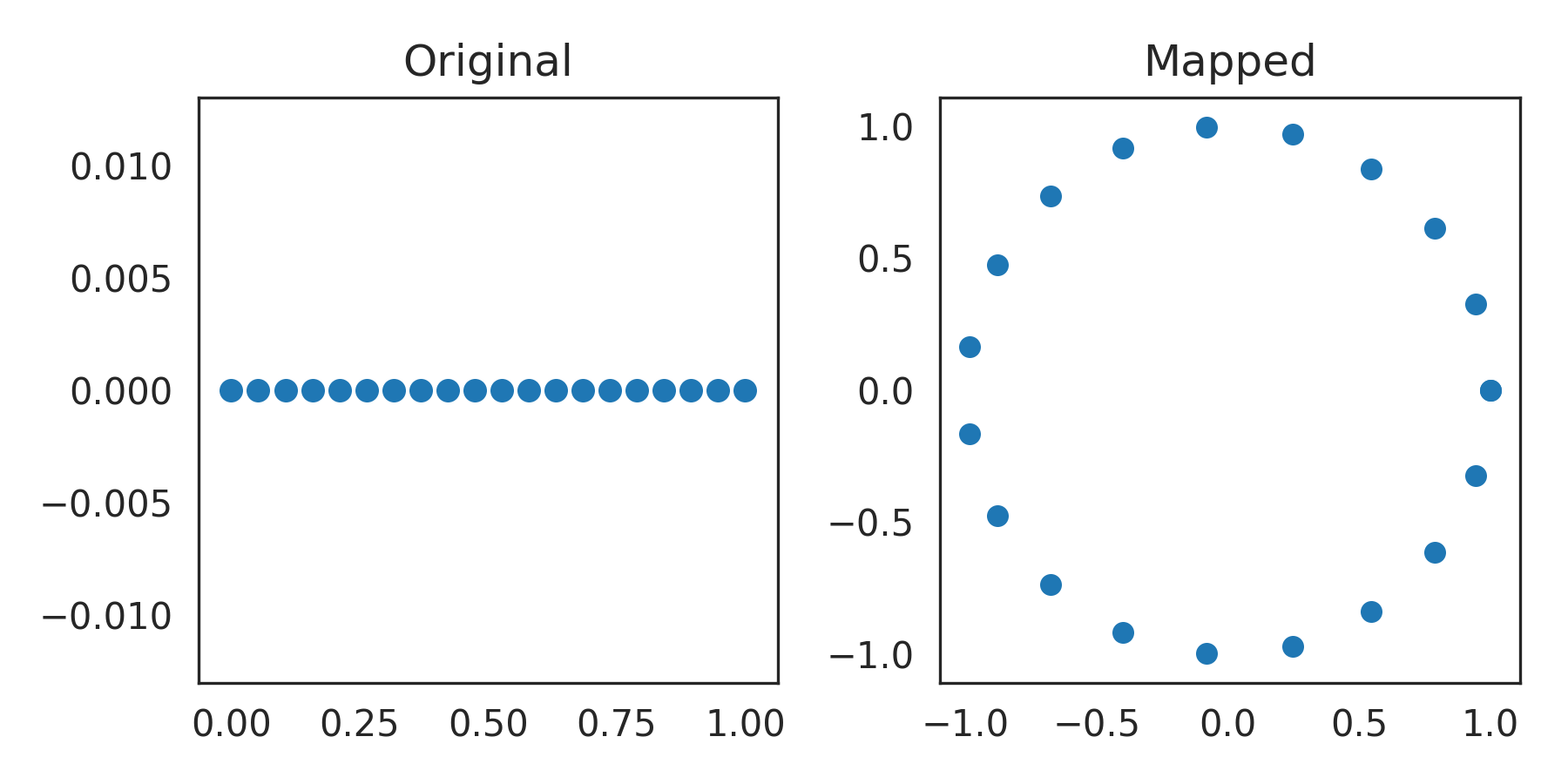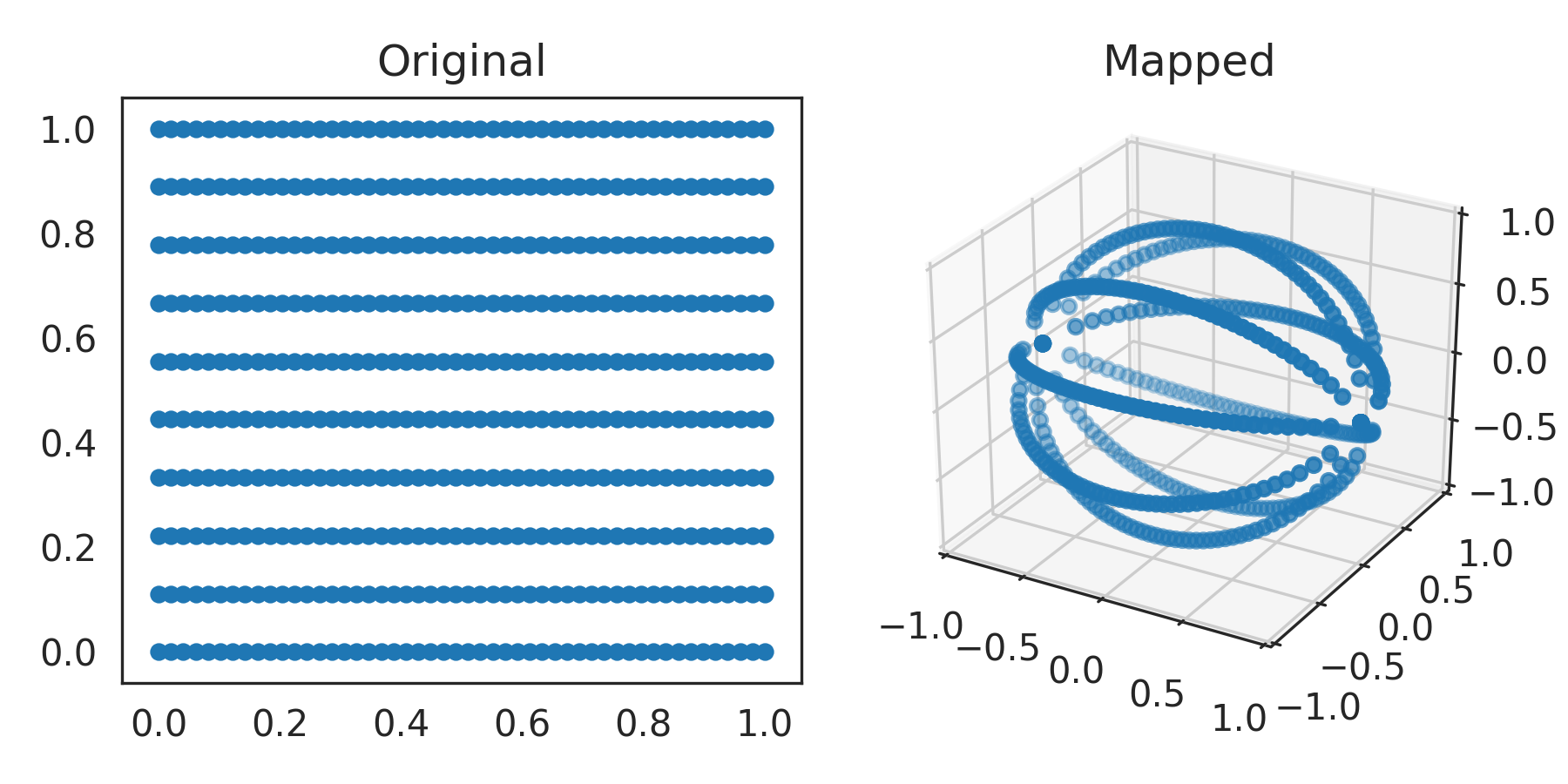nengolib.stats.spherical_transform¶
-
nengolib.stats.spherical_transform(samples)[source]¶ Map samples from the
[0, 1]–cube onto the hypersphere.Applies the inverse transform method to the distribution
SphericalCoordsto map uniform samples from the[0, 1]–cube onto the surface of the hypersphere. [1]Parameters: - samples :
(n, d) array_like nuniform samples from the d-dimensional[0, 1]–cube.
Returns: - mapped_samples :
(n, d+1) np.array nuniform samples from thed–dimensional sphere (Euclidean dimension ofd+1).
See also
References
[1] K.-T. Fang and Y. Wang, Number-Theoretic Methods in Statistics. Chapman & Hall, 1994. Examples
>>> from nengolib.stats import spherical_transform
In the simplest case, we can map a one-dimensional uniform distribution onto a circle:
>>> line = np.linspace(0, 1, 20) >>> mapped = spherical_transform(line)
>>> import matplotlib.pyplot as plt >>> plt.figure(figsize=(6, 3)) >>> plt.subplot(121) >>> plt.title("Original") >>> plt.scatter(line, np.zeros_like(line), s=30) >>> plt.subplot(122) >>> plt.title("Mapped") >>> plt.scatter(*mapped.T, s=25) >>> plt.show()

This technique also generalizes to less trivial situations, for instance mapping a square onto a sphere:
>>> square = np.asarray([[x, y] for x in np.linspace(0, 1, 50) >>> for y in np.linspace(0, 1, 10)]) >>> mapped = spherical_transform(square)
>>> from mpl_toolkits.mplot3d import Axes3D >>> plt.figure(figsize=(6, 3)) >>> plt.subplot(121) >>> plt.title("Original") >>> plt.scatter(*square.T, s=15) >>> ax = plt.subplot(122, projection='3d') >>> ax.set_title("Mapped").set_y(1.) >>> ax.patch.set_facecolor('white') >>> ax.set_xlim3d(-1, 1) >>> ax.set_ylim3d(-1, 1) >>> ax.set_zlim3d(-1, 1) >>> ax.scatter(*mapped.T, s=15) >>> plt.show()

- samples :
